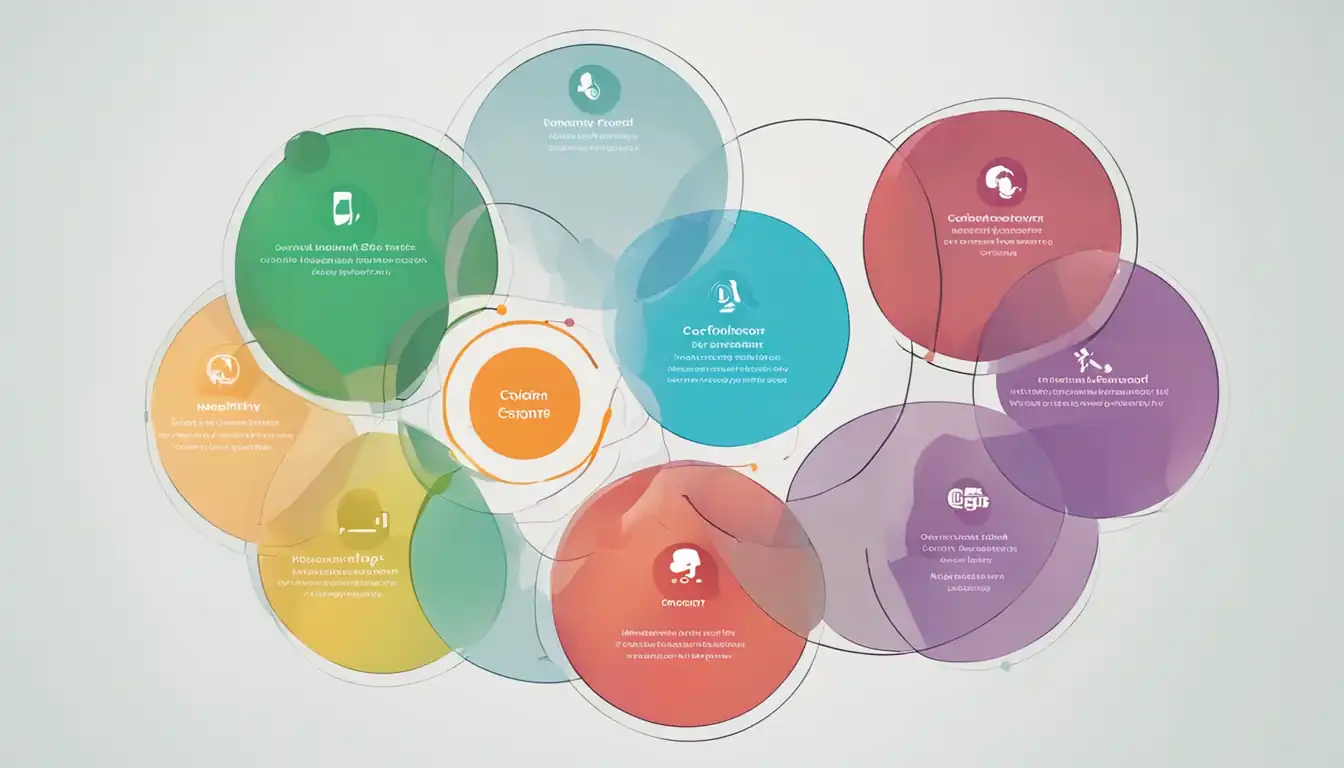Unraveling the Mystery of SEO Content Clustering

In the ever-changing world of SEO, content clustering has emerged as a powerful strategy to boost your website's visibility and ranking on search engine results pages. But what exactly is content clustering, and why does it matter? Let's unravel the mystery together and explore how this innovative approach can revolutionize your SEO game.
Why SEO Content Clustering Matters

In the ever-changing landscape of search engine optimization (SEO), content clustering has emerged as a crucial strategy for improving website visibility and driving organic traffic. By organizing related content into clusters, websites can signal to search engines the relevance and depth of their offerings, ultimately boosting their rankings on search engine results pages (SERPs).
The Evolution of SEO Strategies
Traditionally, SEO focused on optimizing individual pages for specific keywords in an effort to rank higher in search results. However, as search algorithms have become more sophisticated, this approach has proven to be less effective. Enter content clustering – a method that involves grouping related content together under a central topic or pillar page.
By creating a network of interconnected pages that cover various aspects of a topic in-depth, websites can demonstrate their expertise and authority on a particular subject. This not only improves user experience by providing comprehensive information but also signals to search engines that the website is a valuable resource worth ranking higher in SERPs.
How Content Clusters Impact SERP Rankings
Content clustering can have a significant impact on SERP rankings by:
Improving Topic Authority: By consolidating related content into clusters, websites can establish themselves as authoritative sources on specific topics, increasing their chances of ranking higher in relevant searches.
Enhancing Internal Linking: Content clusters facilitate internal linking between related pages, helping search engines understand the relationships between different pieces of content and boosting overall site structure.
Increasing Organic Traffic: As content clusters improve website visibility and user engagement, they can drive more organic traffic to the site over time.
In conclusion, SEO content clustering is not just a trend but a fundamental strategy for modern SEO practices. By organizing content strategically and focusing on creating comprehensive topic clusters, websites can enhance their online presence and achieve better rankings in SERPs.
The Anatomy of a Content Cluster
Core Topics vs. Subtopics
In content clustering, it is essential to understand the distinction between core topics and subtopics. Core topics are broad subjects that serve as the main pillar of your content cluster. These topics are usually high-level and encompass a range of related subtopics. On the other hand, subtopics are more specific areas within the core topic that delve deeper into particular aspects.
When creating a content cluster, it is crucial to identify core topics that align with your overall SEO strategy. These core topics will act as the foundation for your cluster and guide the creation of relevant subtopics to support them.
Building Your Cluster Foundation
Keyword Research: Start by conducting thorough keyword research to identify potential core topics that have high search volume and relevance to your target audience.
Content Audit: Assess your existing content to determine if there are any pieces that can be repurposed or expanded upon to fit into your content cluster.
Topic Clustering: Group related keywords and topics together to form clusters around each core topic. This will help organize your content and establish clear connections between different pieces.
Internal Linking: Utilize internal linking within your content cluster to create a network of interconnected pages that reinforce the authority of your core topics.
Consistent Updates: Regularly update and expand upon your content cluster to keep it fresh and relevant in the eyes of search engines.
By following these steps, you can effectively build a strong foundation for your content cluster and improve its visibility in search engine results.
Step-by-Step Guide to Creating Content Clusters
Identifying Your Pillar Content
When creating content clusters, the first step is to identify your pillar content. This is the main topic or theme that will serve as the foundation for your cluster. It should be a broad topic that can be broken down into more specific subtopics.
Mapping Out Related Subtopics
Once you have identified your pillar content, the next step is to map out related subtopics. These are the specific areas within your pillar content that you will create individual pieces of content for. By covering a range of related subtopics, you can demonstrate expertise and authority on the overall subject matter.
By following these steps and creating a cohesive network of interlinked content, you can improve your site's SEO performance and provide valuable information to your audience.
Common Mistakes to Avoid in Content Clustering

Overlapping Content That Confuses Search Engines
One common mistake in content clustering is creating overlapping content that confuses search engines. When multiple pages on your website cover similar topics or keywords, it can dilute the authority of each individual page. This can lead to keyword cannibalization, where multiple pages are competing for the same keywords, ultimately hurting your SEO efforts.
To avoid this mistake, ensure that each piece of content within a cluster serves a unique purpose and targets specific keywords. By clearly defining the focus of each page, you can help search engines understand the relevance of each piece of content and improve your overall SEO strategy.
Ignoring User Intent and Experience
Another mistake to avoid in content clustering is ignoring user intent and experience. While it's important to optimize your content for search engines, it's equally crucial to consider how users will interact with your content. If your clustered content does not provide value or address the needs of your target audience, it may not rank well in search results or drive meaningful engagement.
To prevent this mistake, conduct thorough research on user intent for each cluster and tailor your content to meet those needs. Consider factors such as search queries, user demographics, and browsing behavior to create a seamless experience for visitors navigating through your clustered content. Prioritizing user intent and experience will not only enhance your SEO efforts but also improve overall user satisfaction on your website.
Measuring the Success of Your SEO Content Clusters
When it comes to content clustering for SEO, measuring the success of your efforts is crucial. By tracking key performance indicators and utilizing the right tools and techniques, you can ensure that your content clusters are driving traffic and conversions.
Key Performance Indicators to Watch
Organic Traffic: Monitor the increase in organic traffic to the clustered pages over time. This will indicate whether your content clusters are effectively targeting relevant keywords and attracting visitors.
Keyword Rankings: Keep an eye on the rankings of the primary and supporting pages within each cluster. Improvements in keyword rankings demonstrate that your content is resonating with search engines.
Time on Page: Analyze how much time users are spending on your clustered pages. Longer dwell times signal that visitors are engaging with your content, which can positively impact search engine rankings.
Conversion Rate: Measure the conversion rate of visitors who land on your clustered pages. Whether it's signing up for a newsletter or making a purchase, tracking conversions will show if your content is driving desired actions.
Tools and Techniques for Tracking Progress
Google Analytics: Utilize Google Analytics to monitor organic traffic, time on page, and conversion rates for your content clusters. Set up custom reports to track specific metrics related to your SEO efforts.
SEMrush: Use SEMrush to conduct keyword research, track keyword rankings, and analyze backlink profiles for your clustered pages. This tool provides valuable insights into the performance of your SEO content clusters.
Ahrefs: Ahrefs offers comprehensive backlink analysis, competitor research, and site auditing capabilities that can help you optimize your content clusters for better search engine visibility.
By keeping a close eye on these key performance indicators and leveraging the right tools and techniques, you can effectively measure the success of your SEO content clusters and make data-driven decisions to improve their performance.
Conclusion
By understanding the importance of SEO content clustering, mastering the anatomy of a content cluster, following a step-by-step guide to creating clusters, avoiding common mistakes, and measuring success through key performance indicators, you can take your website to new heights in search engine rankings. So don't let the mystery of SEO content clustering hold you back - dive in and start optimizing your content today!